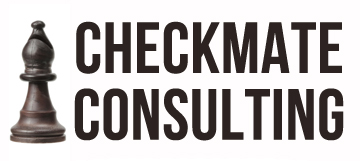The decision to cancel school due to inclement weather is one of the most contentious decisions the Springfield community faces all year, and parents are guaranteed to agree and disagree with the decision regardless. Springfield Public Schools’ communications team will do its best to put out the fires by answering questions as they are posted, but still, the hateful, mean, argumentative comments will roll in on Facebook.
But what happens when a stakeholder attempts to start an argument with our brand or a fellow user on the Facebook page you manage?
New York Times digital editor James C. Best wrote an insightful article this week about how to battle social media arguments and can’t-win propositions. His advice? “Don’t fight flames with flames.”
Trying to discuss an even remotely contentious topic with a stakeholder is a fool’s errand, he wrote. And I can’t agree more – it’s always best to not complain, not explain and not engage hateful users who are just lashing out on social media. Instead, here are three ways to sedate the trolls when posting sometimes divisive or controversial content on your brand’s social media:
1. Let the content speak for itself.
If you provide a link to an applicable page that can provide more information and at least partially explain the reasoning behind a brand’s controversial decision, you’ve won half the battle. Trolls, users who only complain and actively smear brands and individuals on social media, thrive on lack of information and misinforming others in a comment thread. A link can provide correct information before the trolls have a chance to negatively engage or misinform.
2. Answer genuine questions.
If a stakeholder posts a question in a comment thread that is an appropriate, non-confrontational clarifying question, reply to the user directly (using their first name) within the thread as soon as you can. By answering the civil user’s appropriate question, you’re showing the silent observers that a) The brand cares about its customers and will answer appropriate questions and B) The brand will not tolerate or respond to hateful comments, period.
3. If the comment is hate speech, disrespectful to another user, or offensive, hide the comment.
Hiding comments on Facebook means that others can’t read the comment, but the user and his/her friends can – thereby putting the person on mute without the user knowing the sound has been turned off. It’s an easy, non-confrontational way to silence a bully as a brand. And if the user posts vulgar of obscene language? Delete the comment. If they do it again? Ban the user. On the SPS About page on Facebook, there’s a short-and-sweet comment policy that has zero-tolerance for profanity, vulgarity, offensive comments and threats of violence. Don’t hesitate to delete, and if your brand doesn’t have a similar short message in place, add one. (Side note: If a user does post a threat of violence toward your brand or an individual, take a screenshot before it’s deleted for legal reasons).
The big lesson? If you’re thinking about posting a controversial or sensitive content on social media, whether it be on a brand’s page or on your own account, examine the content from every angle before you press post. Would someone find this content offensive? Is this sharing this content worth the possible negative engagement? Is this the type of message I want to send to my friends or our stakeholders? Once you let the genie out of his bottle on social media, there’s no way to put him – or his controversy – back in.

